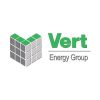Is Your Building EBEWE Compliant? How to Conduct a Self-Audit!

Introduction
In bustling Los Angeles, where the skyline is as dynamic as its culture, building efficiency is not just an option but a necessity. The Existing Buildings Energy and Water Efficiency (EBEWE) Program stands out as a pivotal regulation in this regard. Aimed at reducing environmental impact and promoting sustainable practices, EBEWE necessitates compliance from building owners, ensuring that structures not only meet but exceed energy and water efficiency standards.
However, navigating through the compliance requirements can be daunting. Hence, the concept of a self-audit is crucial for property owners to not only ensure adherence to Los Angeles Building Regulations but also to spearhead the movement towards energy-efficient buildings. This blog post offers a comprehensive guide on how to effectively conduct a self-audit for EBEWE compliance.
Understanding EBEWE Requirements
EBEWE forms a part of a broader legislative framework focused on environmental sustainability. The ordinance applies primarily to commercial and residential buildings over a certain size threshold, mandating regular reports on energy and water usage.
The compliance timelines are staggered, dependent on the size and type of building, making it essential for property owners to be aware of their specific deadlines.
Preparation for a Self-Audit
Gathering Necessary Documents
Start by compiling all relevant documentation such as utility bills, water usage data, and building plans. These records are crucial for a thorough review of your building’s current standing in terms of energy and water use.
Tools and Resources Needed
Access to benchmarking tools like the [ENERGY STAR Portfolio Manager] is indispensable. This tool helps in tracking and assessing energy and water consumption relative to similar buildings.
Setting Goals for the Audit
Define what you aim to achieve with the audit. Goals could range from simply ensuring compliance, to identifying opportunities for significant efficiency improvements.
Steps to Conduct a Self-Audit
Benchmarking Energy and Water Usage
Input your building’s utility data into the ENERGY STAR Portfolio Manager to benchmark against peers. Analyzing these results helps in identifying areas where your building underperforms.
Inspecting Building Systems
Review systems such as HVAC, lighting, and plumbing. Use a checklist approach to identify inefficiencies and potential areas for upgrades.
Reviewing Maintenance Practices
Evaluate if current maintenance schedules align with best practices. Effective maintenance is often a cost-efficient way to improve energy and water efficiency.
Documenting Compliance and Non-Compliance Areas
Create a detailed report of your findings, categorizing issues based on their priority. This documentation will be crucial for remedial actions and future audits.
Developing an Action Plan
With the audit complete, outline strategies to address areas of non-compliance. This might include planning for system upgrades, retrofitting inefficient components, and exploring funding or incentives available for energy-efficient improvements. Budgeting accurately for these actions will ensure financial feasibility.
Implementing Changes and Re-Auditing
Implement the planned changes systematically. Post-implementation, continuous monitoring and periodic re-auditing are essential to ensure ongoing compliance and to assess the effectiveness of the modifications made.
Conclusion
Compliance with EBEWE is not just about adhering to regulations but about embracing a responsibility towards a sustainable future. This self-audit guide is intended to empower building owners with the knowledge and tools needed to contribute positively to our environment.
Initiate your self-audit process today! For those seeking more detailed guidance or facing complex compliance challenges, consider engaging with professionals who specialize in energy and water efficiency audits. Remember, a step towards EBEWE compliance is a leap toward sustainability.
By taking proactive steps towards EBEWE compliance, you not only comply with the law but also significantly contribute to a more sustainable, energy-efficient future. Let’s make our buildings performance leaders in energy and water conservation!

